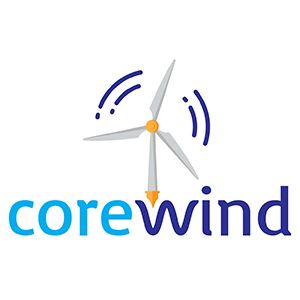Upcoming EU Funding Opportunities and Research & Innovation policy
The 2023 Connecting Europe Facility (CEF) Energy call to qualify for the status of Cross-Border Renewable Energy Sources (CB RES) project is now open! This is the second call to receive the CB RES status and to be added to the list of projects eligible for financial support for studies and works under the CEF Energy Programme. CEF Energy is the EU’s funding instrument supporting investments to build new cross-border energy infrastructure across Europe, or to upgrade existing infrastructure.CB RES projects are a new window for renewable energy funding focusing on cross-border cooperation between EU Members States, but also between Member States and non-EU countries.
The deadline for proposals is 3 May.
Please find more information about the call and the application process for CB RES status here, or contact Nina Mavrogeorgou.
The European Commission launched five calls with a budget of €296m to support EU Missions under the Horizon Europe Work Programme 2023-2024.EU Missions are a unique feature of the Horizon Europe research and innovation programme for the period 2021-2027.
Two calls relevant to offshore wind are open under the ‘Healthy Oceans Mission’ with a deadline on 20 September:
- Innovative nature–inclusive concepts to reconcile offshore renewables with ocean protection.
- Analysis of the obstacles and opportunities for repurposing aged/unused offshore infrastructures.
You can access the call requirements and find all relevant information about the procedure at the Commission’s funding and tenders portal here.
Last January, the European Commission organised Info Days on EU Missions. You can still access the recordings here.
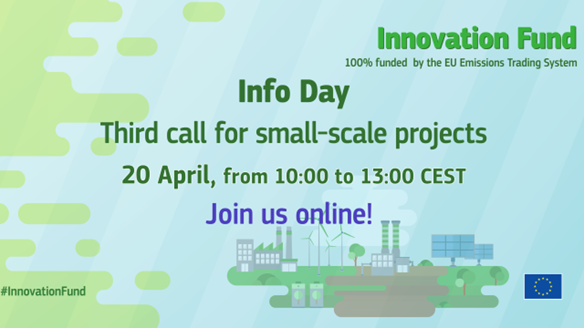
The third call for small-scale projects under the Innovation Fund will open on 30 March with a deadline for applications on 19 September. €100m will be available for projects with capital expenditure between €2.5 and €7.5 million.
Are you submitting a project under the small-scale project call? The European Climate, Infrastructure and Environment Executive Agency (CINEA) and the European Commission’s DG Climate Action are organising an online Info Day on 20 April. Register here.
For more information, contact Iván Pineda.
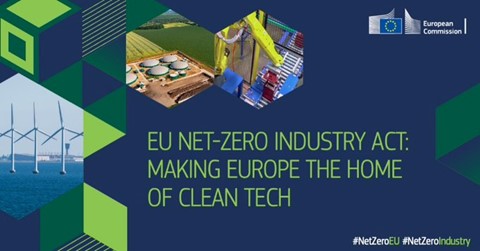
On 16 March the European Commission published its proposal for a Net Zero Industry Act that will create a simpler regulatory framework for net-zero industries in the EU. The Act aims to scale-up the manufacturing of technologies key to achieving climate-neutrality, including on- and offshore wind, grid technologies, batteries and storage, electrolysers and fuel cells.
Among the actions outlined in the Net Zero Act, the European Commission set out the following points to facilitate net-zero industry financing:
- To establish a Net Zero Europe Platform, made up of Member States and the Commission, that together with relevant financial institutions will discuss private sources of financing, investment needs, financing bottlenecks, existing financial instruments and EU funds. It will also discuss cooperation between the EU and third countries to diversify trade and investments in net-zero technologies.
- The creation of a European Sovereignty Fund to support European technologies relevant to the green transition and climate-neutrality.
- Greater promotion of the Recovery and Resilience Facility, InvestEU, the Innovation Fund, Important Projects of Common European Interest and other cohesion policy programmes to fund investments in net-zero technology manufacturing projects.
- Allowing Member States to set up regulatory sandboxes to develop and test innovative net-zero technologies and to stimulate innovation.
The proposal will now be discussed and agreed by the European Parliament and the Council of the European Union.
You can access the full Net Zero Industry Act proposal here and the factsheet here.
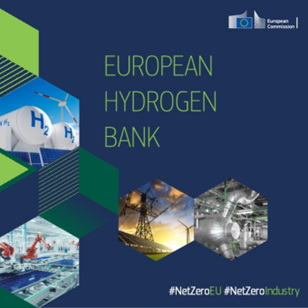
On 16 March the European Commission presented its proposal for the European Hydrogen Bank (EHB). Its objective is to help achieve the production of 10 million tonnes of renewable hydrogen domestically and to facilitate 10 million tonnes of imports by 2030. The communication introduces two new financing mechanisms to support renewable hydrogen:
- An auction under the EU Innovation Fund for the domestic production of renewable hydrogen. The Commission is preparing the first auction, planned for the autumn of 2023 with an indicative budget of €800m. The auction award is a fixed premium (€) per kg of hydrogen for a maximum of 10 years.
- A green (fixed) premium auction for imports from nonEU suppliers. In the long-term demand aggregation and joint auctioning of renewable hydrogen using experiences from the EU Energy Platform and AggregateEU.
The EHB will also streamline existing financing instruments. It will improve cross-sectoral financing knowledge-sharing and awareness of EU support instruments. For example, there will be direct support to the hydrogen value chain under the Innovation Fund. And it will use existing platforms such as the European Chemical Agency, the Hydrogen Energy Network and EU funding information platforms.
You can access the full communication here and the factsheet here.
For more information about the Net Zero Industry Act or European Hydrogen Bank, contact Iván Pineda.
SAVE THE DATE –
important dates on EU funding opportunities and related events
|
20 April 2023 |
Info Day |
Innovation Fund – Third call for small-scale projects info day |
|
3 May 2023 |
Deadline for applications |
|
|
20 September 2023 |
Deadline for applications |
Horizon Europe Missions – Cross-basin topic – Innovative nature-inclusive concepts to reconcile offshore renewables with ocean protection |
|
Deadline for applications |
Horizon Europe Missions – Cross-basin topic – Analysis of the obstacles and opportunities for repurposing aged/unused offshore infrastructures |
|
|
19 April 2023 & 20 September 2023 |
Next deadlines for applications (multiple cut-offs) |
Just Transition Mechanism Public Sector Loan Facility call for proposals |
|
mid-May |
Upcoming opening of call for proposal |
News from WindEurope projects

READY4DC is an EU-funded project creating and engaging a community of experts to assess and give recommendations on the major technical and legal aspects of designing and building an interoperable multi-vendor Direct Current (DC) grid.
Save the date for its 2nd Stakeholder Engagement event! It will take place online on 3 May at 14:00. The READY4DC Working Package leaders will share the latest updates on project activities and present the main findings of READY4DC’s most recent publications.
Read the full agenda here.
Interested? Join us on 3 May! REGISTER HERE

To get the latest news on the project you can subscribe to the mailing list by clicking here.
And to subscribe to the project expert working groups or for any more info, please contact Maria Kotofolou.

The COREWIND project offers disruptive and cost-effective solutions for floating offshore wind technology, bringing costs down to less than €100/MWh. This innovative project is developing research, modelling and optimisation for concrete-based semi-submersible and spar floating substructures.
After 3 years COREWIND experts are ready to publish the final cost-reduction figure achieved through the solutions developed within the project. These solutions will be presented at the COREWIND final event, taking place in Copenhagen (and online) on 26 April 10:45-14:00.
Don’t miss it if you’re eager to improve the cost-competitiveness
of floating offshore wind, REGISTER HERE!
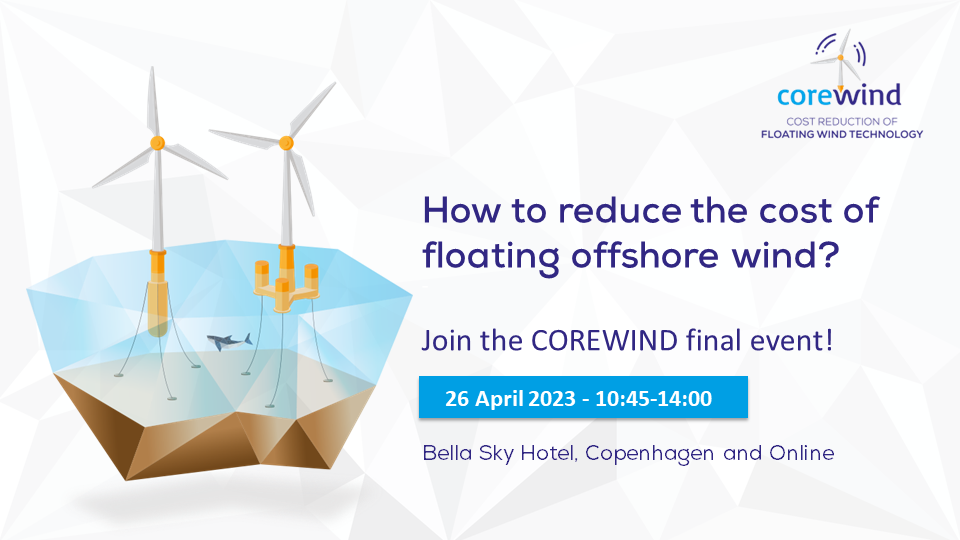
On 15 March COREWIND partners met online to take stock of the key steps achieved over the past six months in helping to cut floating offshore wind costs. And they achieved a lot!
- Project partners have carried out extensive simulations on optimised mooring systems and the optimised design of floaters. Key recommendations on the design of mooring connections and the design of concrete floaters will be published soon.
- hey have also developed relevant strategies and models to design and optimise the station keeping systems. The final designs for the three geographies are compliant with ultimate and fatigue limit states.
- Currently they are preparing design guidance for dynamic cabling systems. The guidance for this will include design considerations on aspects such as water depth, loading conditions or locations of hardware.
- The results of a case study at Morro Bay (US) for the Transport and Installation strategies have been published – including recommendations and a selection of the most promising installation scenarios.
- The experimental validation of the fully coupled system is moving forward. Project partners will carry out more than 135 tests for the scale prototypes of WindCrete (spar) and ActiveFloat (semi-sub).
- Partners are doing the last calculations on the final cost-reduction figures. The final report will include all cost-saving opportunities for floating offshore wind.
- And finally… COREWIND partners are preparing a final go-to-market plan along with a report identifying the main market and research opportunities in different parts of the world.
Follow the project on TWITTER and LINKEDIN
For more information, contact Capucine Vannoorenberghe
About COREWIND: The COREWIND project provides disruptive and cost-effective solutions for floating offshore wind technology leading to cost reduction. It is developing innovative research, modelling and optimisation for concrete-based floating substructure concepts.

The Forward Looking at the Offshore RenewableS (FLORES) project officially kicked-off in January. 15 organisations across eight countries in Europe have teamed up to create tools and activities to foster the development of the skills needed for the future expansion of offshore wind.
FLORES’ core objective is to promote the core activity of the Large-scale partnership launching the Pact for Skills in the Offshore Renewable Energies (ORE) sector.
FLORES partners will monitor training opportunities across Europe and the needs of the sector through a dedicated skills observatory. Through FLORES we will also promote careers across the sectors and will develop training and educational materials for all ages. These efforts are coupled with regional pilot actions aiming to adapt training materials to the needs of Europe’s sea basins in the Atlantic, the Baltic and the Mediterranean.
Project partners met in Ferrol on 2 and 3 March, during the Galician Offshore International Hub(GoInterHub) and took part in the Working Group meetings of the Pact for Skills in the ORE, laying out some of the main milestones and activities of FLORES.
FLORES partners will organise two meetings in Copenhagen, during the WindEurope Annual Event this April. On 26 April we will host a close-door meeting between partners and the Large-Scale Partnership launching the Pact for Skills in the Offshore Renewable Energy sector. On 27 April we will organise a workshop on skills needs in the offshore sector. This workshop is open to all participants (with a limited capacity) especially those working for companies in the ORE value chain (preferably HR managers), industry associations, industry experts, representatives of academia and vocational, education and training centres.
Are you interested in joining our workshop?
Do you want to learn more about the FLORES project?
ContactNina Mavrogeorgou.

The EU project “ Enabling interoperability of multi-vendor High Voltage Direct Current (HVDC) grids” (InterOPERA) kicked off in January in Lyon, France.
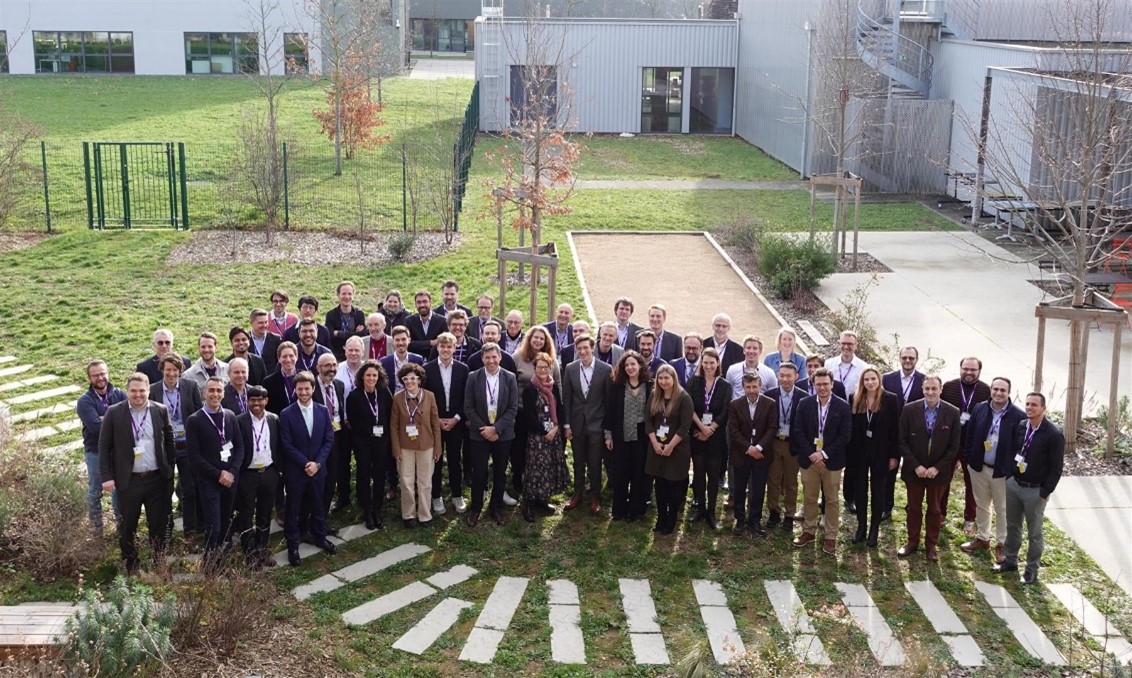
InterOPERA received one of the highest figures of EU project funding from the Horizon Europe programme and brings 21 European partners together to unlock the potential of HVDC grids and to promote a large-scale EU energy transition.
The main objective of the project is to make future HVDC systems mutually compatible and interoperable by design, to improve the grid forming capabilities of offshore and onshore converters and to pave the way for the first HVDC multi-terminal, multi-vendor, multi-purpose real-life projects in Europe.
Join the InterOPERA mailing list and keep up to date about the work we’re doing. Click here to subscribe and visit our website!
For more information, contact Nina Mavrogeorgou
|
Legal notice: The views represented in this newsletter are those of its authors and do not represent the views or official position of the European Commission. |
 |
